 |
| Home for Bats, Raccoons, Squirrels, Bat's or Raccoon's Feces (Guano) Removal. |
| Zip Code Area Serviced |
| Counties We Provide Service For |
| About Us and Contact Info |
| Bats Found in Ohio |
| Bat Exclusion |
| Guano Removal aka Bat (Feces) Poop |
| Opossums Information on Size, Breeding, Habits, and Diseases |
| Raccoons, Habits, Breeding, Size, Raccoon Diseases, Raccoon Trapping |
| Skunks, Odors, Habit, Breeding, Size, Trapping |
| Squirrels, Squirrel Diseases, Removal, Habits |
| Beavers |
| Chimney & Deck Screening |
| Trapping |
| Common Questions Asked |
| Cats, Dogs and Your Local Wardens |
| Do Repellents Really Work?? |
| My Family's 1st WildlifeTrapper & Home Owner's Insurance |
| Info On Raccoons, Bats, Squirrels, Etc..,Size, Weight, Breeding, Etc... |
| Bats Myths or Facts |
| Infectious Diseases of Wildlife |
| "Ken Kritter Korner" |
| NEW SERVICE Bees and Hives Info |
|
|
 |
|
| Raccoon Scat |
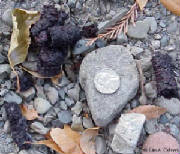
|
Are raccoons bad animals? Certainly not. They can be described as cute and talented, and are well adapted to survive
in both the forest and the city. They get into trouble with people because they are so adaptable, clever, and handy. As with
all animals, they usually just do what they need to do to survive. Oftentimes this means ripping a hole in your roof and living
in your attic. It's true that once inside, they can really trash the place. They will usually rip up the duct work, tear the
insulation off of pipes, rip up wires, trample or pull up the insulation, rip off any paper lining, and sometimes even damage
wood joists. The bigger problem may be the biohazardous contamination they cause. They urinate and defecate in the attic,
and the droppings can contain raccoon roundworm - transferable to humans, or diseases such as canine distemper, transferable
to your pets. They also may bring in the fleas and other parasites associated with wild animals. It's just the way they are.
In many of the jobs that I take on, the customer has already purchased all matter of magic "raccoon-b-gone" or "coon-away"
type repellents. These repellents are usually comprised of either naphthalene (moth balls) or predator urine (fox or coyote)
or ammonia. I've personally observed dozens of cases in which customers have loaded their attics with these sorts of gimmicks,
and it doesn't affect the raccoon's behavior one bit. Please don't try to do it yourself. If you have a raccoon problem; you should to deal with it correctly, with the proper
removal, sanitation, and restoration of area, for your families own good and for that of the animal.
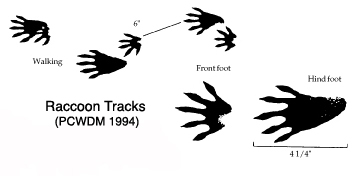
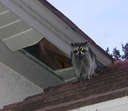
Click Here ~ Diseases From Raccoons
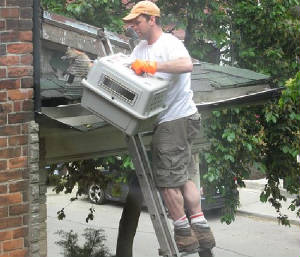
| Raccoon Trap Coming Out From Attic |
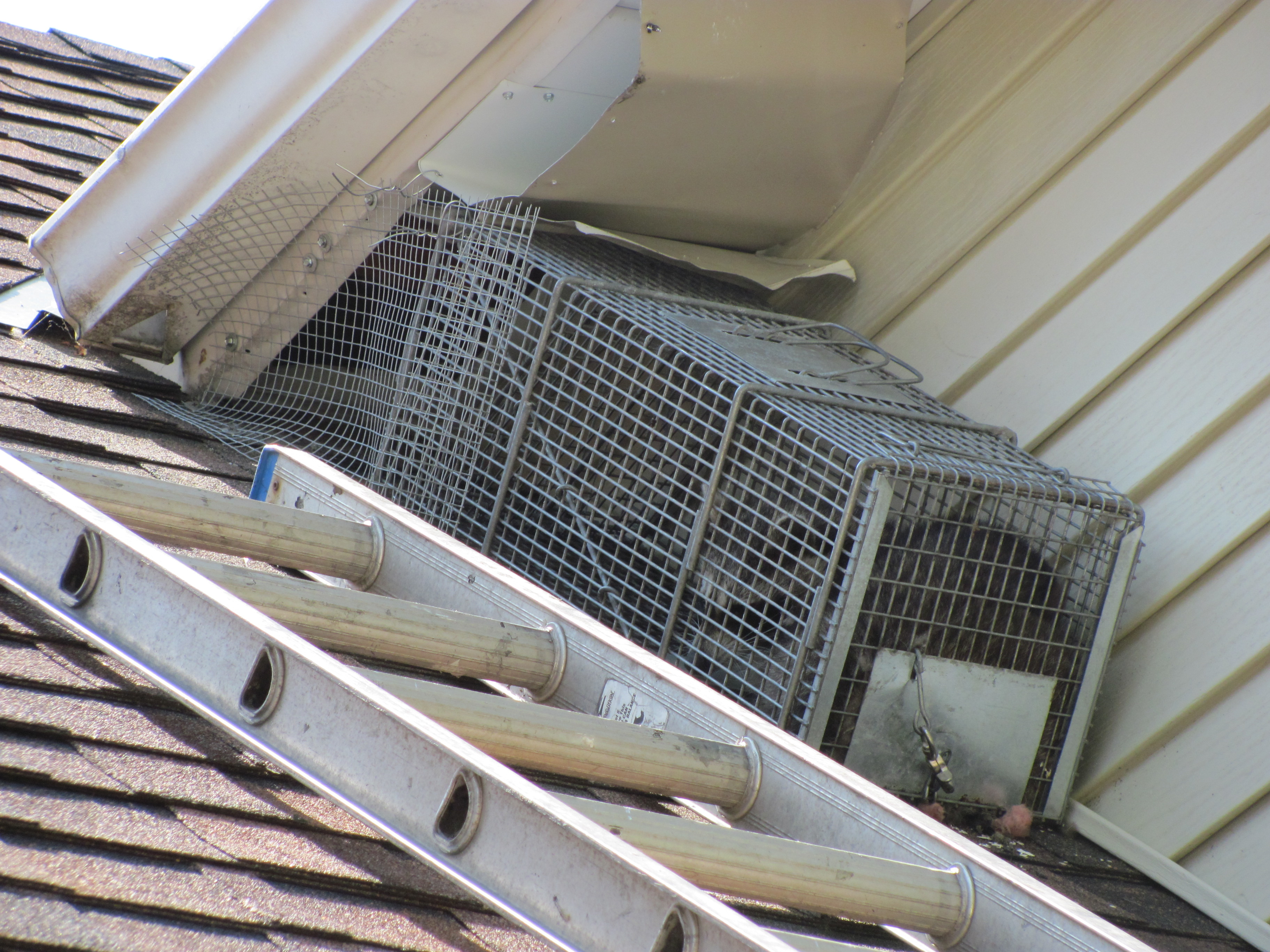
|
The raccoon (Procyon lotor) is a native mammal, measuring about 3 feet long, including its 12-inch, bushy,
ringed tail. Because their hind legs are longer than the front legs, raccoons have a hunched appearance when they walk or
run. Each of their front feet has five dexterous toes, allowing raccoons to grasp and manipulate food and other items
Raccoons prefer forest areas near a stream or water source, but have adapted to various environments throughout
Washington. Raccoon populations can get quite large in urban areas, owing to hunting and trapping restrictions, few predators,
and human-supplied food.
Adult raccoons weigh 15 to 40 pounds, their weight being
a result of genetics, age, available food, and habitat location. Males have weighed in at over 60 pounds. A raccoon in the
wild will probably weigh less than the urbanized raccoon that has learned to live on handouts, pet food, and garbage-can leftovers.
As long as raccoons are kept out of human homes,
not cornered, and not treated as pets, they are not dangerous.
If a raccoon ever approaches too closely, make yourself appear larger: stand up
if sitting, shout, and wave your arms. If necessary, throw stones or send the raccoon off with a dousing of water from a hose
or bucket. If a raccoon continues
to act aggressively or strangely (circling, staggering as if drunk or disoriented, or shows unnatural tameness) it may be
sick or injured. In such a case, call a wildlife rehabilitator, like us at (440) 669-4499. If aggressive
raccoons are routinely seen in your area, prepare your children for a possible encounter. Explain the reasons why raccoons
live there (habitat, food sources, species adaptability) and what they should do if one approaches them. By shouting a set
phrase such as “Go away raccoon!” when they encounter one, instead of a general scream, children will inform nearby
adults of the raccoon’s presence. Demonstrate and rehearse encounter behavior with the children.
If a raccoon finds its way into your house, stay calm, close surrounding interior doors, leave
the room, and let the animal find its way back out through the open door, window, or pet door. If necessary, gently use a
broom to corral the raccoon outside. (DO NOT corner a raccoon, thereby forcing it to defend itself.)
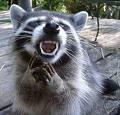 |
 |
|
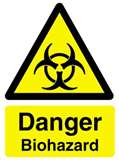
If you have a wildlife problem, such as with a raccoon, OR ANY WILDLIFE , it
best be handled by a professional firm, such as ourselves. Then, and only then, can you have peace of mind that that neither
yourself or family member will be bitten or injured and if required, a biological cleanup will be done properly if needed.
|
 |
|
|
 |
|
|
 |
|
|
|
|
|
|
 |

